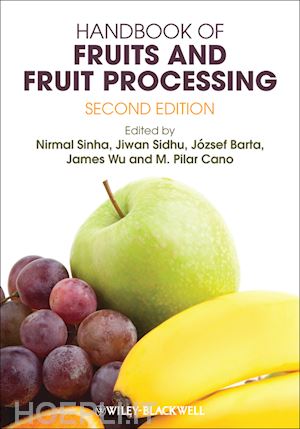Fruits are botanically diverse, perishable, seasonal and predominantly regional in production. They come in many varieties, shapes and size, colors, flavors and textures and are an important part of a healthy diet and the global economy. Besides vitamins, minerals, fibers and other nutrients, fruits contain phenolic compounds that have pharmacological potential. Consumed as a part of a regular diet, these naturally occurring plant constituents are believed to provide a wide range of physiological benefits through their antioxidant, anti-allergic, anti-carcinogenic, and anti-inflammatory properties.
Handbook of Fruits and Fruit Processing distils the latest developments and research efforts in this field that are aimed at improving production methods, post-harvest storage and processing, safety, quality and developing new processes and products. This revised and updated second edition expands and improves upon the coverage of the original book. Some highlights include chapters on the physiology and classification of fruits, horticultural biochemistry, microbiology and food safety (including HACCP, safety and the regulation of fruits in the global market), sensory and flavor characteristics, nutrition, naturally present bioactive phenolics, postharvest physiology, storage, transportation and packaging, processing and preservation technologies. Information on the major fruits includes tropical and super fruits, frozen fruits, canned fruit, jelly, jam and preserves, fruit juices, dried fruits and wines. The 35 chapters are organized into five parts:
* Part I: Fruit physiology, biochemistry, microbiology, nutrition and health
* Part II: Postharvest handling and preservation of fruits
* Part III: Product manufacturing and packaging
* Part IV: Processing plant, waste management, safety and regulations
* Part V: Production, quality and processing aspects of major fruits and fruit products
Each chapter has been contributed by professionals from around the globe representing academia, government institutions and industry. The book is designed to be a valuable source and reference book for scientists, product developers, students and all professionals with an interest in this field.












